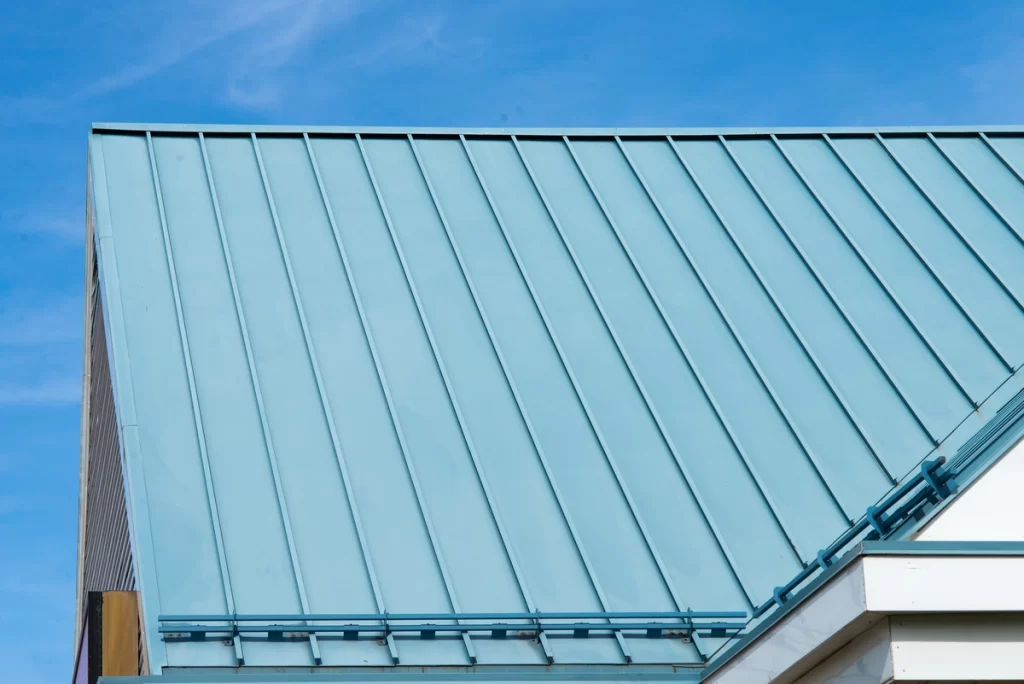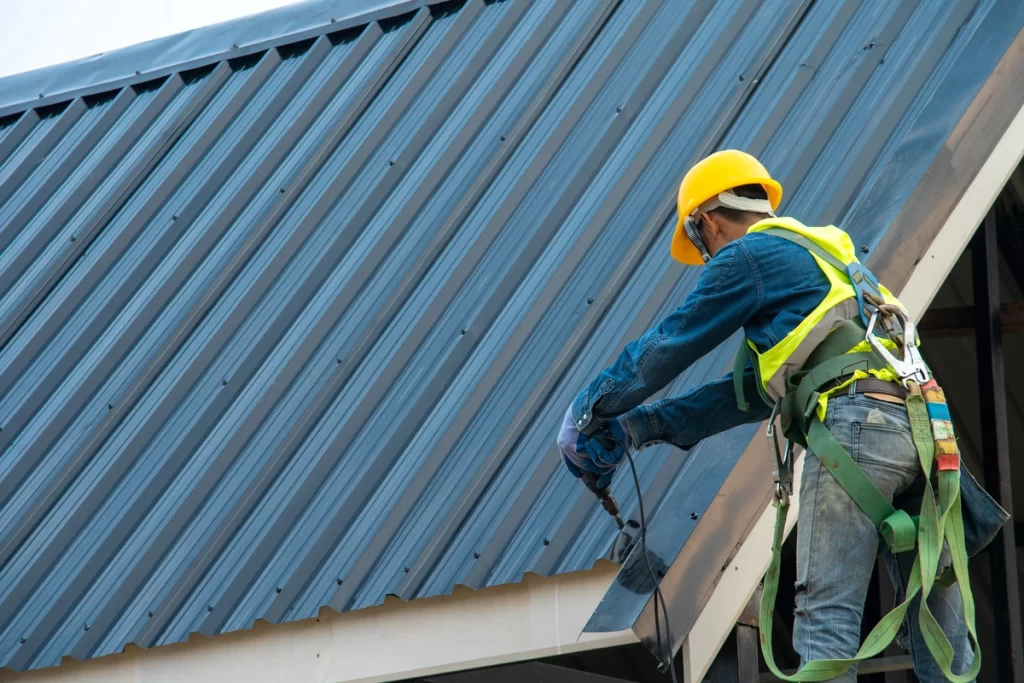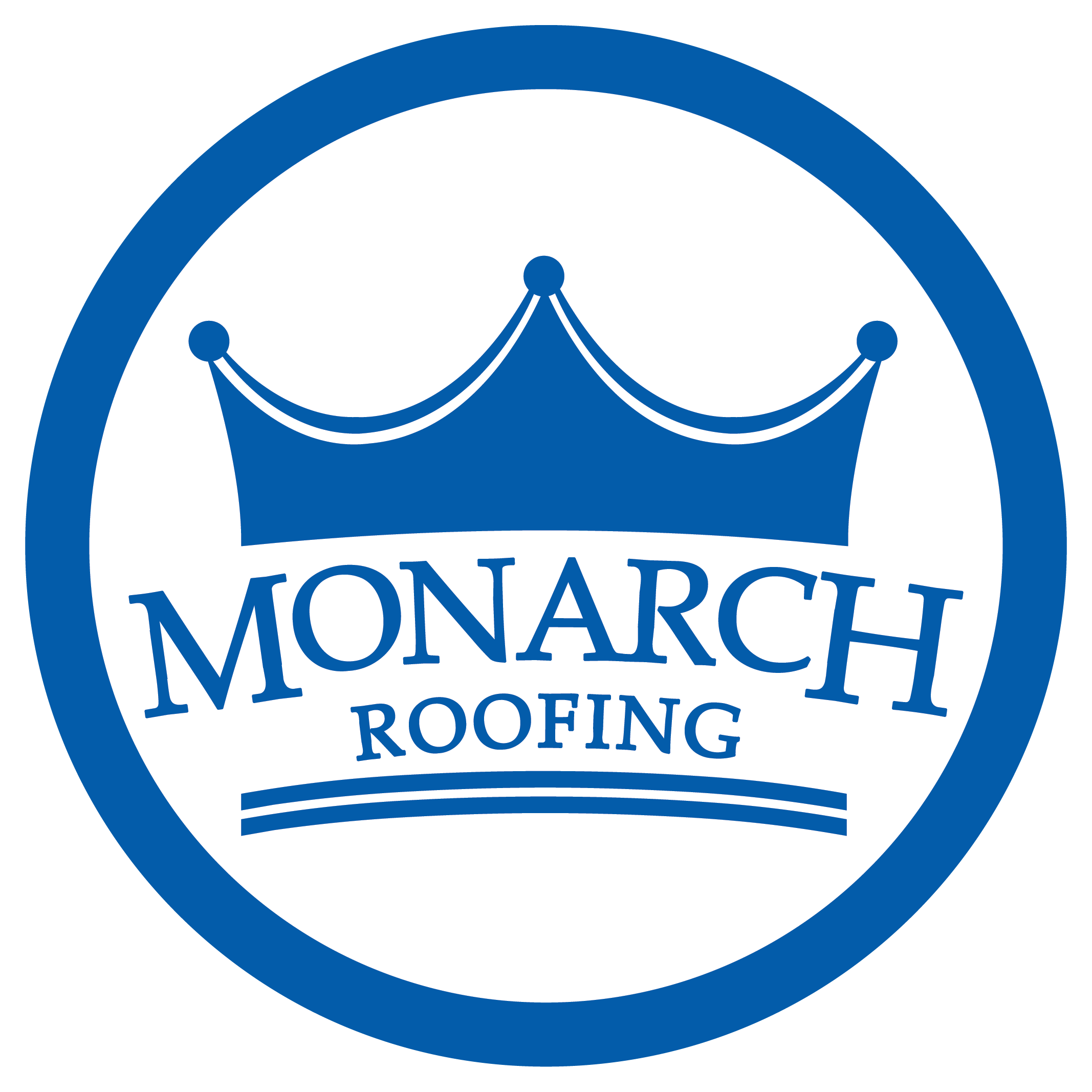When it comes to roofing, few materials offer the durability, aesthetic appeal, and longevity of metal. But to maximize the benefits of a metal roof, understanding the optimal slope is critical.
Whether you’re a homeowner contemplating a new metal roof or a contractor looking to provide the best advice to your clients, this comprehensive guide will walk you through everything you need to know about the minimum slope for metal roof systems.
What Is Roof Slope?

Before we dive into the specifics of metal roofing, let’s clarify what roof slope means. Roof slope, often referred to as “roof pitch,” is a measure of the steepness of a roof. It is usually expressed as a ratio of the vertical rise to the horizontal run. For example, a slope of 4:12 means the roof rises 4 inches for every 12 inches it runs horizontally.
Why Does Roof Slope Matter?
The slope of your roof significantly impacts various factors, including:
- Water Drainage: Steeper slopes facilitate quicker water runoff, reducing the likelihood of water pooling and leaks.
- Snow Load: In snowy climates, a steeper slope helps to shed snow more effectively, reducing the risk of structural damage.
- Wind Resistance: The slope can affect how wind interacts with your roof, influencing its overall durability.
The Importance of Minimum Slope for Metal Roofs

When it comes to metal roofs, the minimum slope is crucial for several reasons:
- Water and Snow Shedding: Metal roofs are known for their ability to shed water and snow efficiently, but this is optimized only if the roof has an adequate slope.
- Material Longevity: A properly sloped metal roof will experience less stress and wear over time, extending its lifespan.
- Warranty Compliance: Many metal roofing manufacturers stipulate a minimum slope requirement to maintain the warranty.
General Guidelines for Minimum Slope
While different types of metal roofing systems may have varying requirements, general guidelines set the minimum slope for metal roofs as follows:
- Standing Seam Metal Roofs: Typically require a minimum slope of 1/4 inch per foot (2% slope).
- Corrugated Metal Roofs: Often require a minimum slope of 3 inches per foot (25% slope).
Factors Influencing Minimum Slope
Minimum slope requirements can be affected by various factors, such as:
Type of Metal Roofing Material
Different materials and profiles have different requirements. For instance:
- Standing Seam roofs generally allow for lower slopes due to their interlocking mechanism.
- Corrugated Metal Panels often require steeper slopes to prevent water from pooling in the ridges.
Climate Conditions
In areas prone to heavy rain or snow, a steeper slope may be necessary to ensure effective drainage and reduce the risk of leaks and structural damage.
Building Codes and Regulations
Always check local building codes and regulations, which may specify minimum slope requirements for different roofing materials and applications.
Manufacturer Guidelines
Always adhere to the specific guidelines provided by the roofing material manufacturer. These guidelines are often based on extensive testing and are designed to ensure the longevity and performance of the roof.
Benefits of Metal Roofs
Before we get into the specifics of determining the correct slope, let’s briefly touch on why you might choose a metal roof in the first place. Here are some of the standout benefits:
- Longevity: Metal roofs can last 40-70 years, far longer than traditional asphalt shingles.
- Durability: They can withstand severe weather conditions, including high winds, heavy snow, and even hail.
- Energy Efficiency: Metal roofs reflect solar radiant heat, which can reduce cooling costs by 10-25%.
- Eco-Friendly: Most metal roofing materials are recyclable, making them a sustainable choice.
6 Step Guide to Determining the Minimum Slope for a Metal Roof

Here’s a comprehensive step-by-step guide to help you determine the minimum slope for your metal roof:
Step 1: Understand Your Roof Design
Determine whether you have a low-slope or steep-slope roof. Metal roofs can be installed on both, but the minimum slope will vary.
Step 2: Consult Building Codes
Local building codes often specify minimum slope requirements. Make sure to consult these codes before making any decisions.
Step 3: Choose the Right Metal Roofing System
Different metal roofing systems have different minimum slope requirements. Consider the following options:
- Standing Seam Metal Roofs: Known for their sleek, modern look and superior water shedding capabilities. Minimum slope typically ranges from 1/4 inch per foot to 1/2 inch per foot.
- Corrugated Metal Roofs: These are more traditional and offer excellent durability. They typically require a minimum slope of 3 inches per foot.
Step 4: Consider Environmental Factors
If you live in an area with heavy rainfall or snowfall, you may need a steeper slope to ensure efficient drainage and to prevent water pooling.
Step 5: Follow Manufacturer Guidelines
Always refer to the manufacturer’s installation guidelines for the specific metal roofing product you choose. These guidelines will provide the minimum slope requirements to ensure optimal performance and warranty compliance.
Step 6: Consult a Professional
When in doubt, consult a roofing professional. They can provide expert advice tailored to your specific situation, ensuring that your metal roof is installed correctly and performs optimally.
Common Myths About Metal Roof Slope
Have you been taught something different? Many people have misconceptions about roof slopes. Here are some of the most common myths in the industry.
Myth 1: The Steeper the Slope, the Better
While a steeper slope can improve water shedding, it also increases material costs and labor complexity. The key is to find the optimal slope for your specific needs.
Myth 2: Metal Roofs Can’t Be Installed on Low-Slope Roofs
Thanks to advancements in roofing technology, many metal roofing systems can be installed on low-slope roofs. However, it’s crucial to adhere to the minimum slope guidelines to prevent leaks and ensure durability.
Myth 3: All Metal Roofs Have the Same Slope Requirements
Different types of metal roofing systems have varying slope requirements. Always refer to the specific guidelines for the product you choose.
Let Us Install Your Metal Roof
Understanding the minimum slope for a metal roof is essential for ensuring its longevity and performance. Whether you’re a homeowner looking to upgrade your roof or a contractor advising clients, this guide serves as a comprehensive resource to help you navigate the complexities of metal roof slope.
Ready to take the next step? Consult with a roofing professional at Monarch Roofing today to determine the optimal slope for your metal roof and ensure a durable, efficient, and aesthetically pleasing installation.





